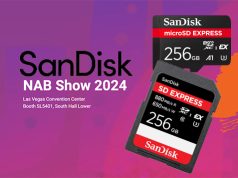Gatherings like the PMA International Convention and Trade Show can put you on the other side of the sales counter, browsing the aisles, exploring booths in search of the right products and services for the year ahead.
With the local economy a lingering question in many areas of the country, retailers enter the exhibit hall with any eye on budget, only so much to spend, eager to put their money wherever it offers promise of maximum rewards. This is not a season for taking risks, and a healthy measure of skepticism is always in order when weighing the merits of vendor hype and unbridled enthusiasm about whatever it is they are selling. The best show deal is ultimately the one with the greatest potential for sell-through.
Shopping any trade show can be a lot like heading out in search of that perfect gift for someone. Sure, on one hand you’re on the prowl for your own business, but at the same time the products and services you’re stalking here are intended for someone else. And, like that vexing quest for the right gift, you want to do all you can to make sure it’s such a good match to their needs, wants and interests, they will cherish having it.
That requires some combination of knowledge and hope: taking what you already know about your customers and projecting that forward into what can be done, what a store can offer to give them something they’ll consider a worthy investment. They, like retailers, will be watching their budgets, but will spend for the right products and services.
But their needs, in some key areas, are not what they were just a few years ago.
They Already Have Cameras
Vendors and retailers have done such a good job selling digital cameras the past few years, memory keepers in the majority of households already have one. The search is now either for products compelling enough to entice them back into the market, or for cameras which can be sold to other members of that household.
Price breaks will again make it very attractive for consumers to put at least a basic camera in most hands this year, from tech-savvy children through the mature users who have thus far resisted the sophisticated allure of going digital. Unless present owners purchased their camera a few years ago, they won’t be enticed to step up on megapixels alone, however.
They will respond to real benefits, attractively priced, which will make it easier to achieve perfect pictures, in any setting. The best in class, all more affordable, address existing wants for improved optics and zoom, results oriented features, easier upload via wireless technologies. And for a good share, the ultimate step-up solution will be a DSLR kit, now priced low enough that it offers an easy entry into a more creative realm.
Shoppers in 2008 will be open to hybrids, as well. The Web and TN news programs are rife with examples of photos and movie clips taken with the ubiquitous camera phone. Imaging specialists need to develop some presence with a handset that is as much a camera/camcorder as phone. And step-up consumers will eventually buy into the wisdom of carrying one camera for all their imaging needs. Price drops on flash media, and gigabytes of internal memory, make that device a practical convenience. An industry gathering like PMA presented the best opportunity to compare what’s there, and mull if such a practical solution has real sales potential in your market.
They Have Problems
Consumers have been so enthusiastic to embrace all the advantages of digital imaging, they’ve overlooked or accepted some of the unique issues this transition has presented them. Returning to the gift analogy, when you can’t provide someone with something new, the best gifts are those which somehow enhance the recipients’ experience with what they already have. Here’s how you can survey the imaging universe, finding opportunities in answers to needs digital camera owners already have.
For instance, survey after survey shows most consumers are doing themselves an injustice in how they handle their digital images once captured. It’s not that the solutions aren’t there: basic imaging/management software is now bundled with most cameras and computers. Rather, it’s that most simply can’t be bothered.
What they need are solutions and advice, easy answers. Maybe that’s dedicated photo hard drives, which can download pictures via USB or wireless directly from the camera. Perhaps lower prices and higher capacities on flash media cards mean it’s time to give these the hard sell— as the digital equivalent of the picture envelope with prints and negatives, photos organized and archived as soon as the card is slipped out of the camera. Or it could be they’ll respond to a Web-based system, available through their local specialist online, which asks they do no more than connect or turn on the camera and computer for pictures to be securely uploaded and protected offsite, always available for printing with a few clicks of the mouse.
As far as prints go, many consumers still need real help in figuring out how to best take a digital image from capture to a print or display. The industry’s continued emphasis on the traditional 4×6 print does many a disservice, crudely cropping pictures which looked great when captured. What print or software solutions can help them get around this problem? What sales aids can you use to educate them in store or online to prepare a print order which matches expectations?
So too are many examples of the ways image files can now live as prints, created at home or in-store. Home printing is a fixture of the industry’s future. Should you support it through online ordering, sales of inkjet printers and consumables, or both? How can you use either to cultivate demand for the traditional and new print services digital allows? Photo books and album pages, in particular hold promise as a creative option which is also an archiving solution. Long term, the most lucrative services will be all those other print products digital makes it so easy to create with a digital minilab or self serve kiosk.
They’re Looking Beyond Prints
The fact is, for all the appeal of the print in all its forms, digital imaging has pointed camera owners down new paths for sharing, display and distribution of images. The ease with which one can upload stills and video to the Web will be selling points of more cameras and camcorders this year. Digital TVs are now in more than half of homes, but not yet as the hub of a content-driven entertainment system. When flat screens are cheap enough to hang in every room, today’s novel applications will be standard fare.
This past holiday season, digital photo frames, essentially a special purpose TV, were a popular gift item. Other, more mobile devices, take on the same concept and include pocket photo viewers, key chain digital albums and the phones and music players which do double duty for portable picture sharing. All point to a much different tomorrow for the imaging industry, but, as evident here, are moving into the mainstream today.
When shopping for a gift, consumers don’t always come back with something in hand. In fact it might take a return trip before they settle on that perfect purchase. But they do head home with a better sense of what will work or won’t, and ways they might spend to get back as much as they give from the experience.
Shopping PMA can be like that. Customers always in mind, the show truly provides a yearly chance to survey the entire imaging marketplace, where it stands, and where it’s headed. Then, bring it all back home to alert consumers to all they might want from the imaging experience, and secure your future in the new, established and emerging opportunities that brings. yy





